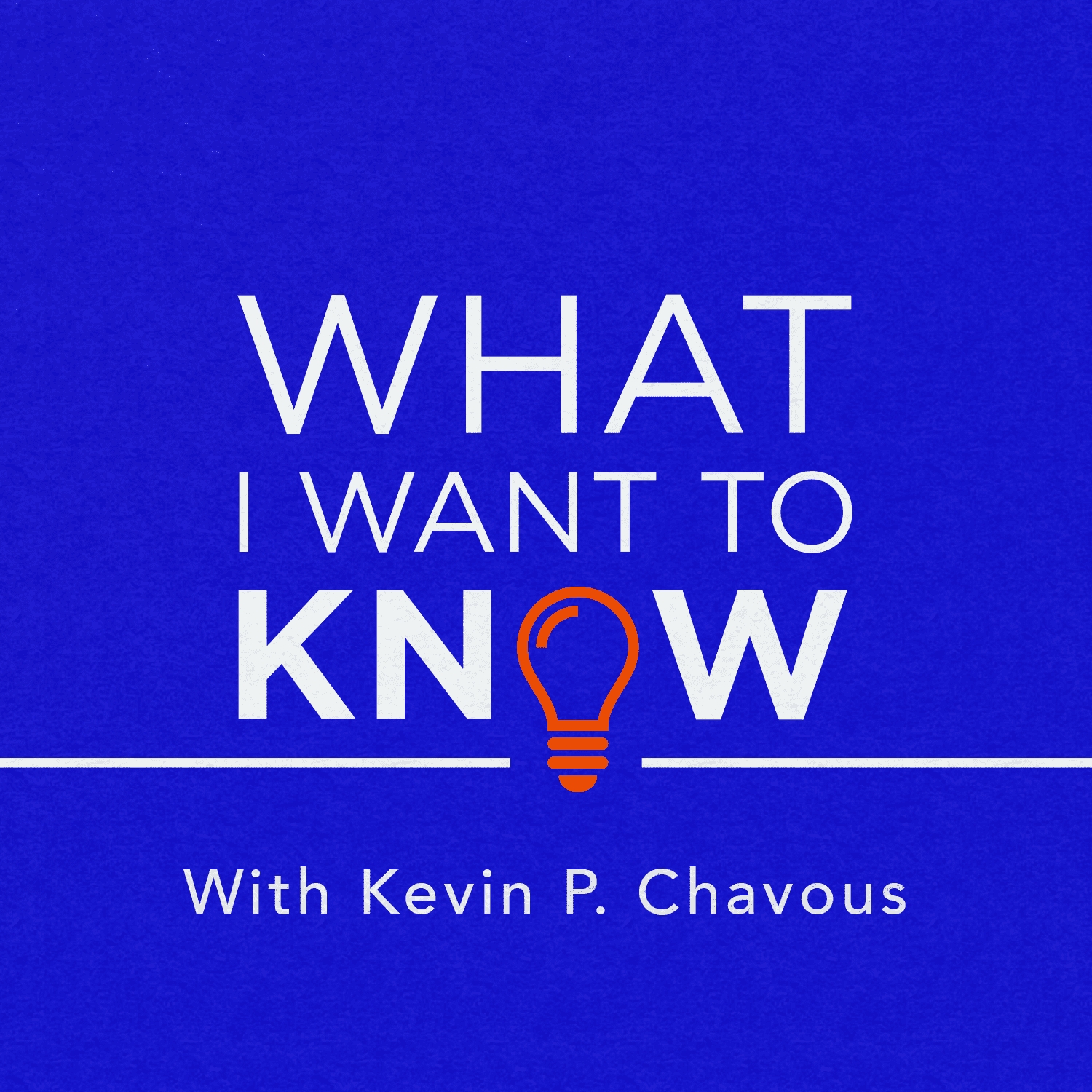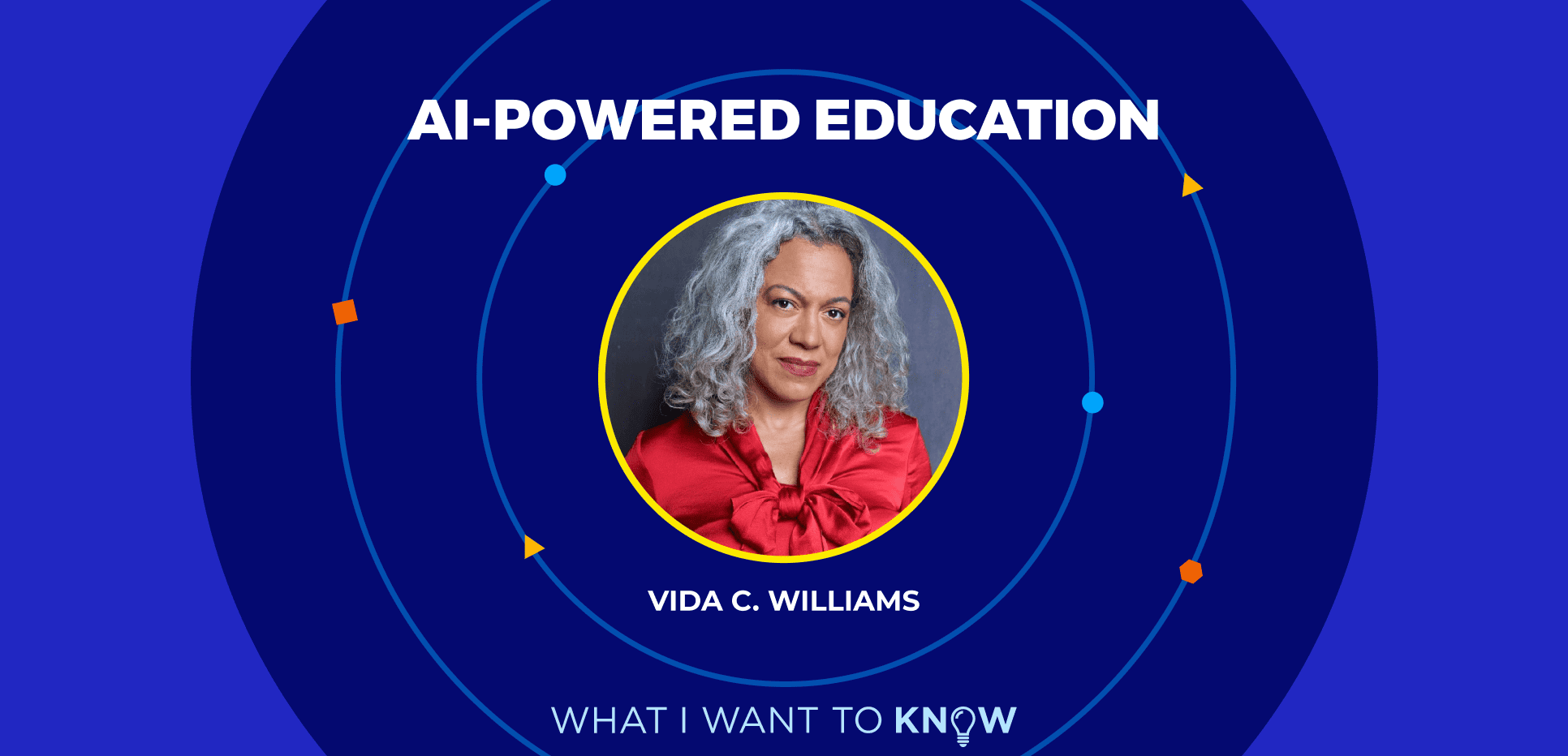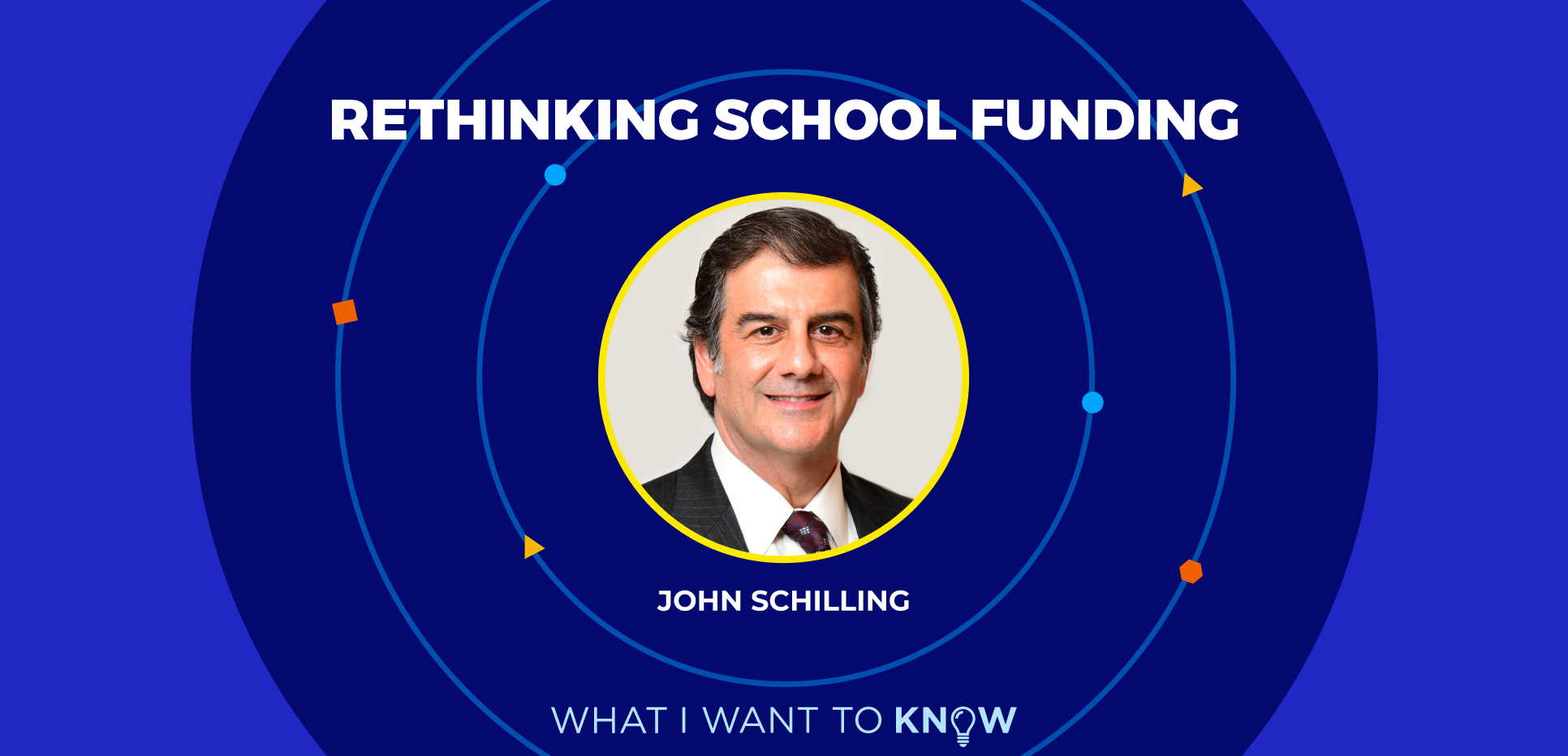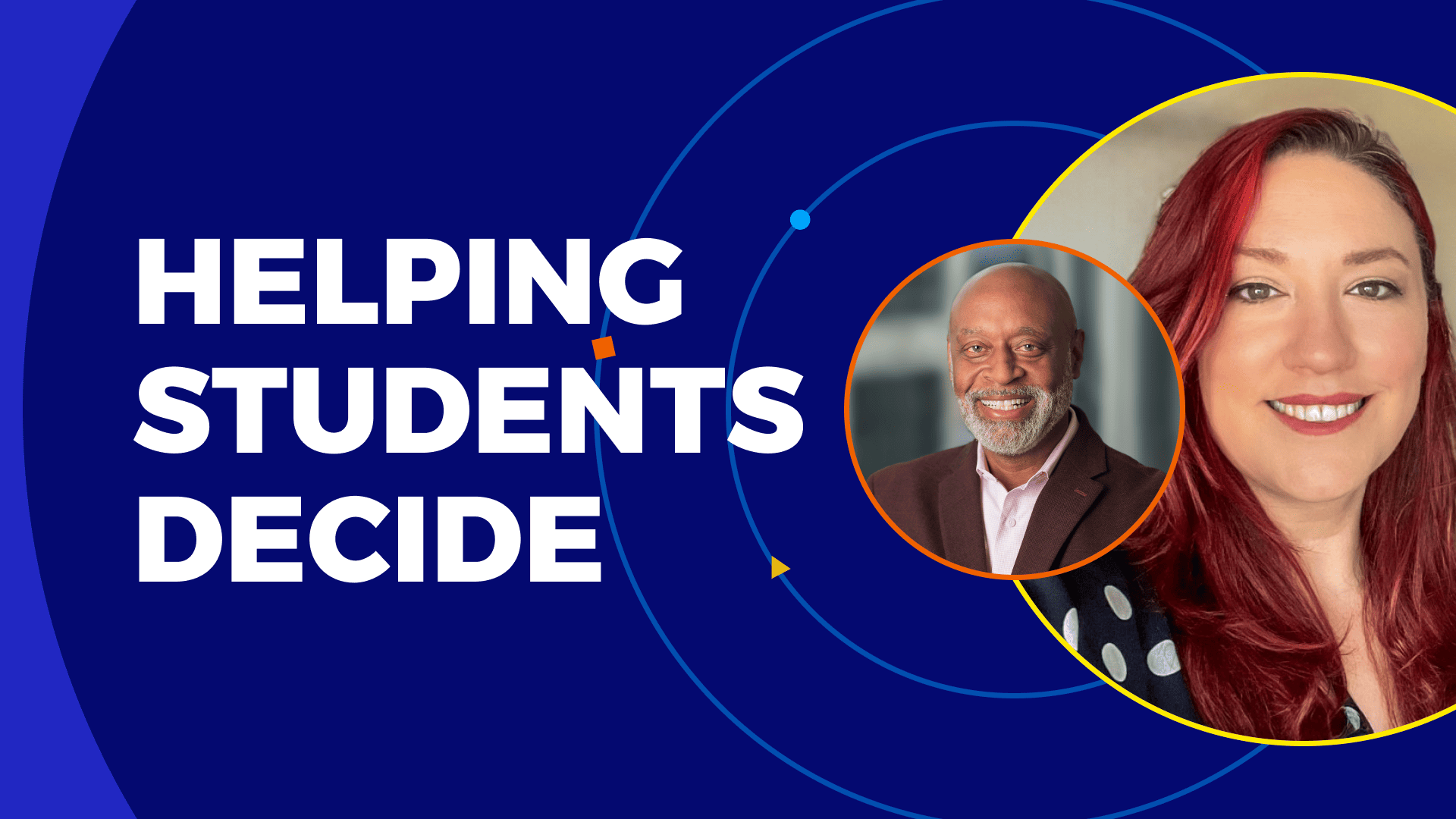More than 7.5 million students in the United States have disabilities that qualify them for individual education plans. However, teachers trained in special education are in short supply.
In fact, a survey found that 65% of public schools report being understaffed in special education.
What is causing this shortage? How is this affecting teachers and students across the country? And what can we do to combat the shortage of special education teachers?
In this episode, Kimber Wilkerson shares how we can combat the shortage of special education teachers
Listen to the Full Audio
Listen on: Apple Podcast, Spotify
Transcript
Kevin: More than 7.5 million students in the United States have disabilities that qualify them for individual education plans. However, teachers trained in special education are in short supply. In fact, a survey found that 65% of public schools report being understaffed in special education. What is causing this shortage? How is this affecting teachers and students across the country? And what can we do to combat the shortage of special education teachers? This is “What I Want to Know.” And today I’m joined by Kimber Wilkerson to find out.
Kevin: Kimber Wilkerson is a professor of education at the University of Wisconsin-Madison. She has broad expertise in preparing teachers to provide instruction to students with disabilities and improve their long-term outcomes. She joins us today to discuss how we can combat the shortage of special education teachers. Kimber, welcome to the show.
Once again, Kimber Wilkerson, thank you so much for joining us. It’s so good to have you on. You are an esteemed expert in the area of special education, and I want to talk about that. But I always ask my guests how did they get where they are. I mean, when you were that little girl growing up, did you see yourself as a special education teacher and doing this kind of work?
Kimber: It’s always an interesting question, isn’t it?
Kevin: Yeah.
Kimber: I did not see myself as a teacher growing up. In fact, my undergraduate degree was in engineering and computer science.
Kevin: Oh, wow.
Kimber: But as a college student, I volunteered at a local school, and I was just placed with a special educator because that’s where they needed someone. And I really enjoyed it. I enjoyed working with the kids, working in the school. And so then I ended up getting my master’s degree in special education and becoming a special educator after that. I really enjoyed sort of the challenge and the creativity and having a career path that felt meaningful to me, so.
Kevin: Well, let’s go back to that first experience. What was it that stoked your interest? What did you enjoy about it when you had that first experience in helping that teacher?
Kimber: I think schools generally, K-12 schools are places with a lot of joy and energy. So I think those are places that, you know, people often find some motivation. You know? But specifically, when I was working with the special educator and then working with individual students, I think the part that really sparked my interest was just, you know, I’ll say maybe the challenge of it. It was like a little bit of a puzzle to figure out, like, what’s going to help this particular kid? And that’s, I think, one of the things that I’ve always enjoyed about special education is that, you know, that piece of, you know, trying to see the individual student who isn’t thriving in the way that their peers are and trying to see what needs to be kind of adjusted for that kid or what they need that’s a little different than someone else needs.
So I think I enjoyed the sort of, you know, the puzzle of it and, you know, sort of digging in to try to figure out what was going to work for this individual kid. And then, you know, the satisfaction when you connected with the kid and you found something that seemed to make a difference. So just in that little volunteer experience, I could see it being appealing.
Kevin: But you know what was fascinating to me, Kimber, is that I’ve said this to people about teachers generally, but I think it’s even more apropos for teachers who teach in the area of special education. And the word that comes to mind is patience, that it really does require, when you talk about putting pieces of the puzzle together, if you’re working on a complicated puzzle, again, to use your analogy, you don’t rush through that. I mean, you literally have to make sure that it fits, it batches and all that. Talk about how you maintain that, because sometimes as you get sort of experience in a field, there may be a tendency to skip steps because you know the area. How do you maintain that patience and make sure that what you do is tailored to that individual child, that new individual child you may be working with?
Kimber: That’s a good point to drill down on. I think, you know, sometimes I push against whenever someone kind of refers to special educators as, you know, you need to be a saint, you know, like that kind of a . . . And that’s not what you said. But, you know, the idea that someone is doing this out of the goodness of their heart rather than out of a, you know . . . But the idea of patience, for sure, you know, because it’s often the kids who end up being referred and are working maybe individually with a special educator or who that special educator is consulting about are sometimes young people who have maybe tried the patience of their general educator or other people in the building, and so it takes somebody . . . I always feel like there’s a lens of advocacy and a lens of like sort of seeing, you know, the worth and the, you know, dignity of each individual kid and sort of trying to look past what, you know, other people have maybe not been able to see.
So there is certainly an amount of patience and a desire to stay persistent, you know, in terms of . . . because you also are doing sometimes educating your colleagues to try to, like, step back themselves and give this young person another chance or to try to look at them a different way. So I do think, to me, the patience is the thing that kind of I think can inspire or keep the patience at the fore is that reminder of the individual kid who you are doing this in service of. So hopefully, you know, I guess when we educate pre-service teachers in special ed, we try to play up the part of the role that is, you know, an advocate for kids and an advocate for families, you know, so that they can keep that kind of as their inspiration too.
Kevin: Before you got your doctorate, you worked in a day treatment program to help kids with behavioral challenges. And my sense is since you were still young in your career that that experience has some benefits for you. So talk a little bit about that.
Kimber: Those early experiences, as you noted, I worked primarily with kids who had been identified as having some behavioral mental health issues and collaborated with a mental health provider. And there were small groups of kids. And I think there are some kids within special education that are sort of more marginalized than other kids in special education. So some kids are more likely to be included and accepted. And then there are kids sometimes with, you know, really significant support needs or kids who have a lot of behavioral challenges that are sort of the fastest to be pushed out and the least welcomed back into a gen ed environment. And getting to work in small group settings with those young kids just made me, I guess, really learn to appreciate them and appreciate the ways in which their sort of potential and their ability to contribute was overlooked.
And I was sometimes because, again, as a special educator in that setting, you know, I had maybe only 10 students where my gen ed colleagues were responsible for many more students. So I had the, you know, benefit of getting to know their families, getting to know the kids and their learning styles and their backstories and their interests. And so because of that, it really sort of drilled into me, you know, how much you can learn about some . . . how little you might know about a kid just from your general interaction.
So I think that part really, you know, kind of solidified for me something, which is I try to instill in other special educators that, you know, you almost never know the whole story. Right? You really have to stop and try to see past, you know, the really obvious stuff. And the same goes with families too. Sometimes the older the students get, educators might have formed an opinion about, you know, a kid and their sort of support system. And it’s good to push back on that and try to convince people that they can’t possibly know everything. Yeah.
Kevin: Yeah. I want to talk to you about the teacher shortage with special education teachers and what we can do to recruit teachers into this field. But before that, let’s talk about the state of special education generally. Previously, you know, 30, 40, 50 years ago, there was always this sort of stigma attached to kids in special ed.
In fact, this is a brief aside. My wife and I sometimes watch these old movies from the ’40s and ’50s, ’60s, whatever. And part of the reason why we do it is so that we are able to acknowledge and recognize the significant cultural changes that have taken place. The way women are portrayed, folks of color are portrayed and referred to is totally different. When you look at these movies, what was acceptable, even the language and how folks were addressed is totally changed. You couldn’t even imagine films being made like that today. And we happened to be watching a movie with a kid who had special challenges. And the way this child was referred to and the way the kid was ostracized, this was a film in the ’40s, it made me think, well, even with all the challenges we have in this area, we’ve come a long way, haven’t we?
Kimber: Yeah, for sure. So special education law, you know, the mandate that public schools provide special ed services started in the mid-’70s. And certainly, there’s unevenness. In some places, things were probably harder, more challenging, more prejudice against or inability to see the sort of humanity of people with disabilities or young people with disabilities. So there’s certainly a lot of variation and a lot of exceptions. But I think we definitely have come a long way in terms of, you know, kids being welcomed into schools. A lot of places do a very nice job of including kids into the gen ed classrooms, of trying to include even kids with pretty complex needs, you know, into spaces with their peers.
I think there’s probably less, you know . . . There is more acceptance, certainly. There’s certain, you know, even in the last 20 years, you know, having a learning disability or ADHD or, I mean, I’d say even in the last 5 to 10 years, having autism or having an autism spectrum disorder are things that people are, you know, more knowledgeable about and sort of can talk more freely about. And parents and the youth themselves might take a little more ownership of those kinds of labels and sort of not be so embarrassed by them.
So I do think we’ve come a long way, and things for kids with disabilities are much better now than they were 30, 40 years ago. I’d say that’s probably pretty universally true in our country, but there’s still stigma. Even today, teachers, special educators report, you know, that they think their students are sometimes unwelcome and that there’s stigma attached to their job. Even special educators themselves sometimes report that they feel they’re not sort of understood and included by their colleagues in their own buildings. So there’s room for improvement, for sure. Though to your point, you know, you sort of have to . . . What’s your frame of reference? Things are better, but there’s room for improvement, like there are in so many other domains.
Kevin: Yeah. There’s no doubt about that. And clearly, you know, COVID shined a light on the mental health challenges that all children face, in fact even adults. And, you know, many schools now insist that teachers and staff get trauma-informed training. People talk about these things differently now. So that’s all positive. But as you said, positivity aside, you know, even if you go back to the basics, these are supposed to be IEPs, individualized education plans for individual children. Even today, you see where there’s cut and paste with some of these plans. You see where kids of color are totally marginalized and more likely to be herded into special education programs that may not suit them.
There’s misdiagnosis or, you know, the improper diagnosis and sort of the shadow student syndrome, I call it, where, you know, you talk about some schools are better at incorporating children with special needs into the gen ed population, but some are really, really horrible at it and almost kind of make no bones about it. So how do we continue to build on where we’ve been in terms of some of these improvements in destigmatizing both teachers who teach in this field and students who happen to have special needs? How do we build on that improvement and address some of these other issues that are still there, but I’m just not sure the needed changes in this area is given the priority it should?
Kimber: You’re hitting something that I think about a lot, which is, you know, even though there’s a lot of strides, you can find places where really positive things are going on. At the same time, you can find places where maybe kids are being included in ways that are actually detrimental. Like it’s sort of it’s on paper included, but no one is really, like, taking their needs into account. There are still segregated classrooms. There are still places where kids are pushed out. It is true that kids of color and particularly, like, black boys, for example, are more likely to be given a certain label, the emotional behavioral disorders label, more likely to be sent to a segregated placement, more likely to get, you know, suspended, expelled, all kinds of things.
So there’s definitely still a lot of room for improvement. You have to kind of look at it more carefully than just the aggregate numbers or the aggregate, you know, like, well, maybe kids with disabilities spend more time in gen ed than they used to 20 years ago. But is that equally true for all kids with disabilities? Certainly, and that’s where things I think break down and you see discrepancies in terms of who benefits from those advances.
I do think that, I mean, awareness is one thing, but one thing that I think about young people and I’m kind of referring to college-age people who are pursuing teacher ed degrees, though those aren’t the only people going into education, right? There’s a lot of people, career changers or people who are coming back and getting an advanced degree and going into teaching for the first time. But one thing that I’m kind of, I think, heartened by with, you know, some of our teacher candidates is it seems like there’s an openness to difference and a desire or willingness to question sort of assumptions about difference and, you know, what kinds of differences are, like, acceptable, okay, or sort of pushing older generations to sort of rethink the way we kind of categorize people.
And I think that that can be used in service of, you know, helping people to also think about difference just among youth in a school, you know, like so that it doesn’t have to necessarily be pathologized or punished, but to see it just as the breadth of, you know, human potential and the way people learn, and maybe that can sort of go toward reducing some of that stigma or reducing maybe even people thinking about special education as a profession as a lever of change in a school in terms of trying to advocate for the building to have whether it’s more patience, whether it’s a desire to be sort of less . . . to think that there’s one right way, you know, and the students who don’t sort of fit into that, you know, need to be treated differently.
So I don’t know. I hope I didn’t sidestep your question. But I do think there’s this sort of we might have the possibility to kind of capitalize on these kind of notions of difference in our larger community and to try to use that to the advantage of kids who end up in special education.
Kevin: Yeah. That’s well said, actually. And I couldn’t agree with you more. I do think that for years we’ve had this expression that sort of encourages activism, but really just encourages, you know, young people to speak their mind as question authority. Well, I don’t think we’ve seen a generation, maybe in the ’60s, but this generation questions authority more than any other generation, I think, in human history, but not in an always aggressive or hostile way. It’s almost in a commonsensical way. Like, well, why do you . . .? We’ve always done it this way? Well, why? It doesn’t even make sense.
And I think that you’re right that that sort of mindset if it permeates, particularly as folks in that generation, you know, college-age, you know, 20s start to move up through the ranks, that that could create a sea change. Still, there is a shortage of special education teachers. In fact, fewer and fewer young people are entering the teaching profession. This is one of the reasons why I really wanted you on. Talk a little bit about what we can do from, you know, education community point of view, societal point of view to encourage more young people to enter the teaching profession and specifically the special education teaching profession.
Kimber: Yeah. As you noted, it’s a challenge right now. The number of young people . . I keep saying young people, but what I really mean is people who complete teacher preparation degrees.
Kevin: Yeah, I get it. Yeah.
Kimber: The people who are getting certified and are going into the field has sort of decreased nationally. Not in every single university, but . . . And a lot of people have kind of pointed to our sort of the reduction in investment in teachers nationwide, you know, all kinds of teachers, not just special educators. I think special educators are one of the teaching areas that’s always been kind of hardest to staff and hardest to keep. And so, you know, it seems like if there’s a wave of now this teacher shortage, you know, this is going to be a new wave of teacher shortage. It’s going to impact special education, maybe first and hardest, you know, and then . . . So there are things that a lot of people are trying all over the country.
People are trying different things, creative things to try to attract people into the profession. There are loan forgiveness programs. Here at my own university, we have this thing called the Wisconsin Teacher Pledge. And so that is, you know, basically a loan forgiveness program for anyone, whether masters or undergrad who goes into a teaching degree. They can have the cost of in-state tuition covered as long as they stay and teach in the state for three to four years. The federal government, different programs like the Office of Special Education Programs funds different kinds of they call them personal preparation grants, where essentially they’re covering people’s tuition and giving them a living stipend. And in return, they sign a service agreement saying they’ll stay in the profession for a certain number of years.
So there’s certainly some places around the country where these financial incentives are being employed. I also think there are a lot of different pathways that people are trying. So residency programs, for example, where someone’s coming in and they’re getting . . .
Kevin: I was going to ask you about they have one in Madison, right?
Kimber: Yep. Yep. We have been involved with . . . Now this is our second residency program. Our first one . . . These were both funded by a federal grant under the Teacher Quality Partnership Program. But we had one with some small rural districts in Beloit, which is a kind of a . . . It’s a small town. And then we now have one with Milwaukee, which is a much larger urban district. And in both of these programs, you know, you mostly are recruiting people from the community. That’s not all. Those aren’t the only kind of people who come to a residency program because we’ve had people move from far away because they just like the sound of it. And so essentially they’re provided a salary and they are learning under the, you know, direction of an experienced teacher for an entire school year.
And at the end of that school year, they’re also taking classes during this time. And at the end of that year, the summer, a year, a summer, they have their degree and they’re licensed and then they stay in that same district. Ideally, they stay in the same building where they were completing their residency because you’re already then making, building relationships, you have a mentor right there. The principal knows you. And if there’s an opening, which in special education there often is, then you can sort of stay in that same community. And I think it gives you a little bit of a leg-up as a new educator to kind of come in with some relationships already, knowing some of the students.
Kevin: Yeah. How can we get more districts to embrace these kind of programs, these teacher residency programs, sort of the financial incentive programs? Because it seems to me, and you mentioned, you know, Beloit and that rural district, that particularly for those kinds of communities, the more you can have these programs, it will have a huge impact. I mean, if you had one or two special ed teachers in a small rural district, it will have a huge impact, whereas if you do it in a large urban area, it may not have the same impact, it’s important. So how can we encourage school districts to be creative and embrace more of these kind of creative offerings?
Kimber: Yeah. And I think a lot of districts are interested in it. And I think sometimes there’s a barrier there because just the act of getting the infrastructure set up in your district to be able to pull it off because, of course, school districts, you know, their primary job is to educate students. They have a job. And sometimes just the act of setting up a residency program, where you might have to set up some new position that the residents would be employed in, you have to set up some new way of assigning and incentivizing the mentors. School districts do it. But I think, you know, the more infrastructure or resources available to districts so that they can like see models and, you know, maybe even be coached into, like, how did you do it, and another successful district, like, what did you do? And maybe they can mimic that or learn from that. I think that would be helpful.
This is our second round of starting up a residency program, and, you know, it still feels like a heavy lift with the resources that we have. So I do think there’s interest, and I think maybe we just need a little more nationally or state level, some infrastructure to help districts do it.
Kevin: So, Kimber, I have one last question. This is what I really want to know. And it was one of those questions, like, are you optimistic or pessimistic? But I can tell, you know, you’re smiling all the time. You’re optimistic. So I’m going to reframe the question a little bit just to suit you.A
Kimber: Okay.
Kevin: But, you know, we’ve talked about what needs to happen. What are some of the signs that could happen in the future in terms of how we manage the special education need community that will make you feel like, “Okay, we’re really embracing systemic change in a bigger way across the board”? Because it seems like in the ’70s, we had the change, and then in the ’90s, you know, folks were focused on cleaning up some of those school districts that weren’t really. And now we almost hit this period of status quo. I like to think that the COVID and the focus on mental health will be an accelerant. But what would you point to, to demonstrate that that acceleration in terms of focus on this area, is really taking hold?
Kimber: That’s not an easy question. I’d say, you know, post-COVID . . . So the shortages of teachers was already getting attention prior to COVID. Right? But then COVID came along and, you know, it accelerated that challenge. But I guess there were two things that were happening. One is it accelerated this challenge of, you know, of losing educators and people leaving the field. But it also opened up, I think, creativity. And a lot of people post-COVID have sort of pushed back on, like, “Well, we could let some kids learn online. We could do that.” There’s a lot of like, “Well, I don’t know. We did it before. Why can’t we do it now?”
So I do think that, like, it’s opened up some sort of creative gates for people. And so even with the kind of challenges that it brought, for sure, and there’s still residual from that, it also opened up, I think, possibilities for different kinds of solutions and maybe willingness to embrace things that people just hadn’t been, you know, sort of willing to think about before.
Kevin: Yeah, that makes a lot of sense. You’re right that similar to what you said about, you know, younger generation asking those questions, why questions or why not, that now educators who’ve been used to old-school methods are embracing those kind of questions as well, which is hope for the future.
Well, Kimber Wilkerson, thank you so much. I enjoyed the conversation. I appreciate you joining us on “What I Want to Know.”
Kimber: Yeah. Thank you so much for having me. I enjoyed it as well.
Kevin: Thanks for listening to “What I Want to Know.” Be sure to follow and subscribe to the show on Apple Podcasts, Spotify, or your favorite podcast app so you can explore other episodes and dive into our discussions on the future of education. And write a review of the show. I also encourage you to join the conversation and let me know what you want to know using #WIWTK on social media. That’s #WIWTK.
For more information on Stride and online education, visit stridelearning.com. I’m your host, Kevin P. Chavous. Thank you for joining “What I Want to Know.”
Meet Kimber
Kimber Wilkerson is a professor of special education at the University of Wisconsin-Madison.
She has broad expertise in preparing teachers to instruct students with disabilities and improve their long-term outcomes.







